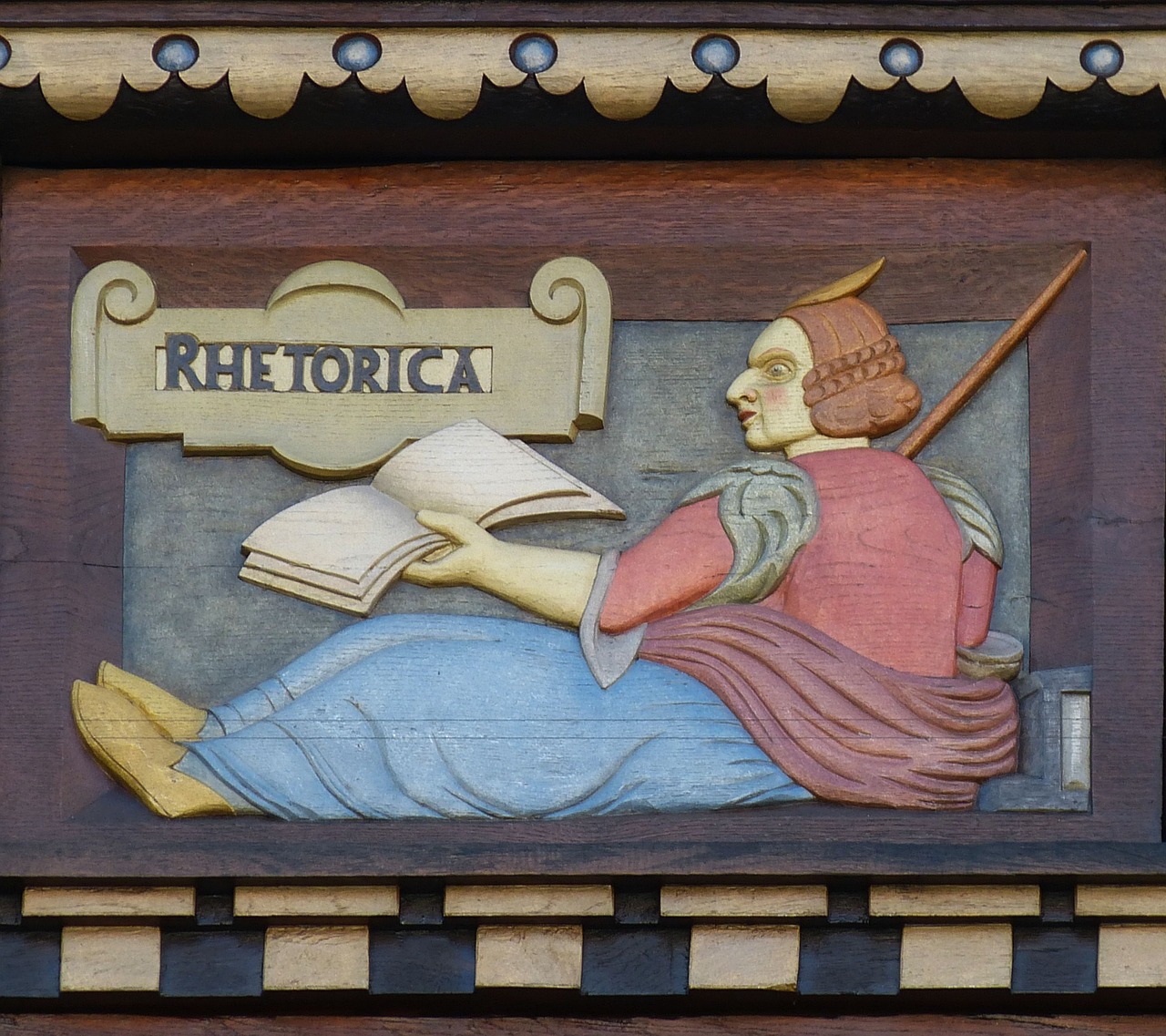Rhetoric and rhetorical figures in music from the 17th century (Part 1)
This is the first part of our four part series on Rhetoric and Music. Part 1 is here, Part 2 is here, Part 3 is here and Part 4 is here.
In connection with music from the 17th and the first half of the 18th century, one often hears about the concept of rhetoric. Music from this era is sometimes also called rhetorical music. Most of the musicians and the public have never heard of rhetorical figures, which composers from that time used. If they have heard of them, then it would be the more famous one like those that appear in the scores of Bach's Passions such as the figures that symbolize the cross, or the well-known crowing rooster and the curtain that tears after Jesus has died.
I am regularly asked how this is done with the use of rhetorical figures? Did there exist catalogue lists with figures, which composers used like recipe books, from which they compiled the appropriate figures for them to be incorporated into their compositions? What do they have to do with the doctrine of the affects? When and why did rhetorical figures disappear from the music again? And what do they mean for the performing musician?
Although rhetorical figures are encountered in music from all countries, the music treatises that arose in the 17th and 18th centuries, in which rhetorical figures were treated as a special feature, were almost exclusively restricted to German-speaking areas. The treatment of figures always took place in connection with the analysis of musical pieces (or extracts thereof). In the 20th century, during the rediscovery of baroque music, modern musicologists became interested in the figures again. The concept of rhetorical figures was developed at that time and was used by the musicologists to summarize the various composition techniques with which text could be composed.
To answer the questions above, I will give an overview of the developments in music theory in the 17th and 18th centuries. Based on an analysis of a piece by Hammerschmidt, I will demonstrate various examples of rhetorical figures and their use. I will also discuss how they were composed at that time.
The rhetoric in the music of the 17th century
Origin of rhetoric as art and science
The history of rhetoric begins in Greece in classical antiquity. Greek citizens, who wanted to influence political or legal decisions, had to be able to speak before the Council of Ancients or a court and convince them of their request via their arguments. The concept of rhetoric as art and science developed during the fifth century BC. In his Rhetorica, Aristotle (384 - 322 BC) developed the first systematic description of rhetoric as an art to convince the public of the truth by awakening the right emotions. (see footnote 1)
Aristotle criticized the abuse of this, namely when emotions not related to the case were aroused, for example by inducing sympathy, or by having family members appear before a court of law. According to him, only all emotions that mattered to the argument should be awakened. The speaker had to convince through credibility, goodness and virtue. His speech had to be clear, but not banal. In this way he could awaken awareness and attention in the audience. According to Aristotle, there are eleven states of mind or affections: desire, anger, fear, courage, envy, joy, love, hatred, desire, jealousy and compassion (affection theory).
Although the Greek rhetoricians were first rejected in Rome, they finally obtained a place in Roman culture. Important Roman orators were Cicero and Quintilian. From the Roman rhetoric theory comes the notion of the officia oratoris, the five steps that the orator must make:
- Inventio: determining a main topic and coming up with arguments
- Dispositio: the organization of reason in different parts
- Elocutio: style and design; this includes the use of metaphors and rhetorical figures
- Memoria: memorizing the reason for the recitation
- Actio / pronuntiatio: the presentation itself, including the loudness, the tempo, pausing and articulation, timbre and prosody (rhythm, stress and intonation), mimicry, gesticulation and eye contact
A speech had to stir (movere), instruct (docere) or entertain (delectere).
From the Greek antiquity comes the idea that one can express the different moods with the help of music. Quintilian (~ 35 - ~ 100 AD) regarded vocal music as an equal discipline alongside rhetoric. He then established both structural similarities and parallels between the different tones in reason and the melodies in music. These ideas will be picked up again in the Renaissance.
Jörn Boysen
Footnotes
- According to the sophists, more than one truth existed. Important for them was the art of persuading regardless of what, whether it is a lie or a truth. For the real philosopher, this is an ethically disputable view.
Running an ensemble is a rewarding but time consuming job. Chasing after grants and sponsorship is the often overlooked but important aspect of a musician's life. If our post has passed the reward period, please consider a donation or a delegation. We also accept tokens of support at the following addresses:
BTC
1Mwe6XaDcREa7o5RSLGoWfk9wSwGs6LkSA
LTC
LPcEtTsxMJykDeK713jsj3e2BsdVf32ix7
ETH
0x1bb1d830f66bdb74de45685a851c42b790587a52
Doge
DMJNS7jbNCgPdFdxgeFdEummFMmSQvAoK2
Musicoin
0x9c1fc741f0869115f8c683dc6967131ab1c40ebc
Smartcash tips accepted!

Our Musicoin artist page
Thanks for you support!

The classical music community at #classical-music and Discord.
Follow our community accounts @classical-music and @classical-radio.
Follow our curation trail (classical-radio) at SteemAuto
Community Logo by ivan.atman


.png)
Wow! This is my type of post. Very nicely done. Thanks to @bengy for featuring this post in the PayitForward contest. You have a new fan and follower in me.
Glad you enjoyed it! We have the rest of the series coming out in the coming days.
Your post has been supported and upvoted from the Classical Music community on Steemit as it appears to be of interest to our community. You can find details about us below.
The classical music community at #classical-music and Discord.
Follow our community accounts @classical-music and @classical-radio.
Follow our curation trail (classical-radio) at SteemAuto
This post has been voted on from MSP3K courtesy of @djlethalskillz from the Minnow Support Project ( @minnowsupport ).
Bots Information:
Join the P.A.L. Discord | Check out MSPSteem | Listen to MSP-Waves
As a follower of @followforupvotes this post has been randomly selected and upvoted! Enjoy your upvote and have a great day!
I found that pretty interesting, I did not know about the speech/music connection. It gives me a new way of looking at speeches, and how some are so boring, yet others no matter the content can be so good.
Yes, this is the study of of persuasive arguments!
It used to be that speech and music were interlinked, but over history, musicians forgot this...
@musicapoetica your post was featured by @bengy in my Pay It Forward Curation Contest which brought me here. Hope others will follow the link over and enjoy your post.
Thank you!
Great article! Was every educational and I learned some new things. Thanks! :)
No problem! Glad you enjoyed it!